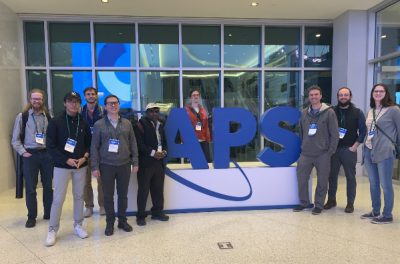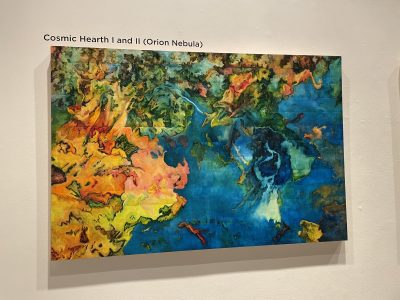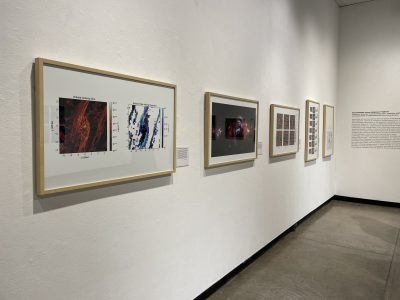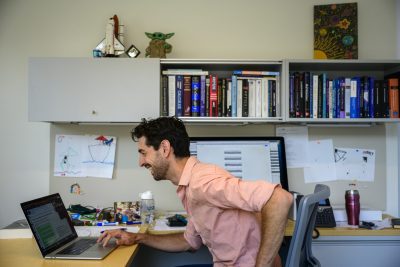This year, international conferences have begun to come back into their pre-pandemic form. For the American Physical Society’s annual March Meeting, it was bigger than ever with over 12,000 participants in the world’s largest meeting ever devoted to physics. UConn showed strong as graduate students, postdoctoral fellows, research scientists, and faculty researchers attended the meeting in Las Vegas March 5-10 and showcased their newest results. The team rolled in deep and gave diverse presentations to an international audience on many topics in condensed matter physics, ranging from high-fidelity electronic structure calculations and material modeling, synthesis and characterization of new materials with competing states, advances in industrial science related to advanced manufacturing, synchrotron-based investigations of correlated materials, nanoscale magnetic imaging studies, the development of new cryogenic instrumentation, twistronic effects, vortices in topological materials and circuit-based quantum information science. See you next year!

From left to right: Jacob Pfund, Bochao Xu, Joshua Bedard, Ilya Sochnikov, Gayanath Fernando, Jacob Franklin, Jason Hancock, Donal Sheets, Kaitlin Lyszak
Not pictured: Krishna Joshi, Guang Chen (MSE), Jorge Chavez, Priya Sharma, Alexander Balatsky, Pavel Volkov.
 h group,
h group, 


 The James Webb Space Telescope released its
The James Webb Space Telescope released its  Prof. Strickland is one of the recipients of the 2018 Nobel Prize in Physics for developing
Prof. Strickland is one of the recipients of the 2018 Nobel Prize in Physics for developing  Professor Cara Battersby has been awarded an NSF CAREER grant! “
Professor Cara Battersby has been awarded an NSF CAREER grant! “